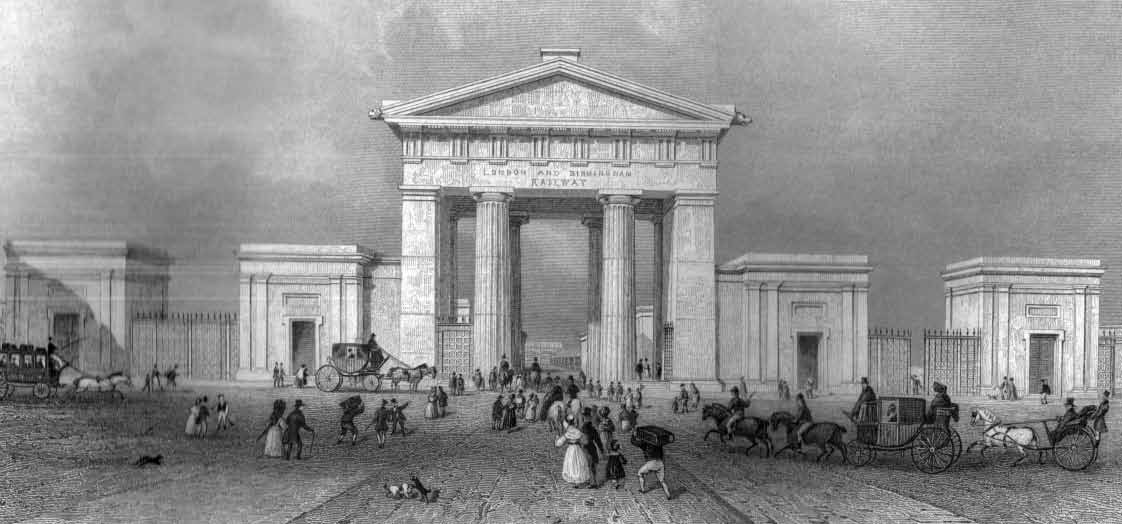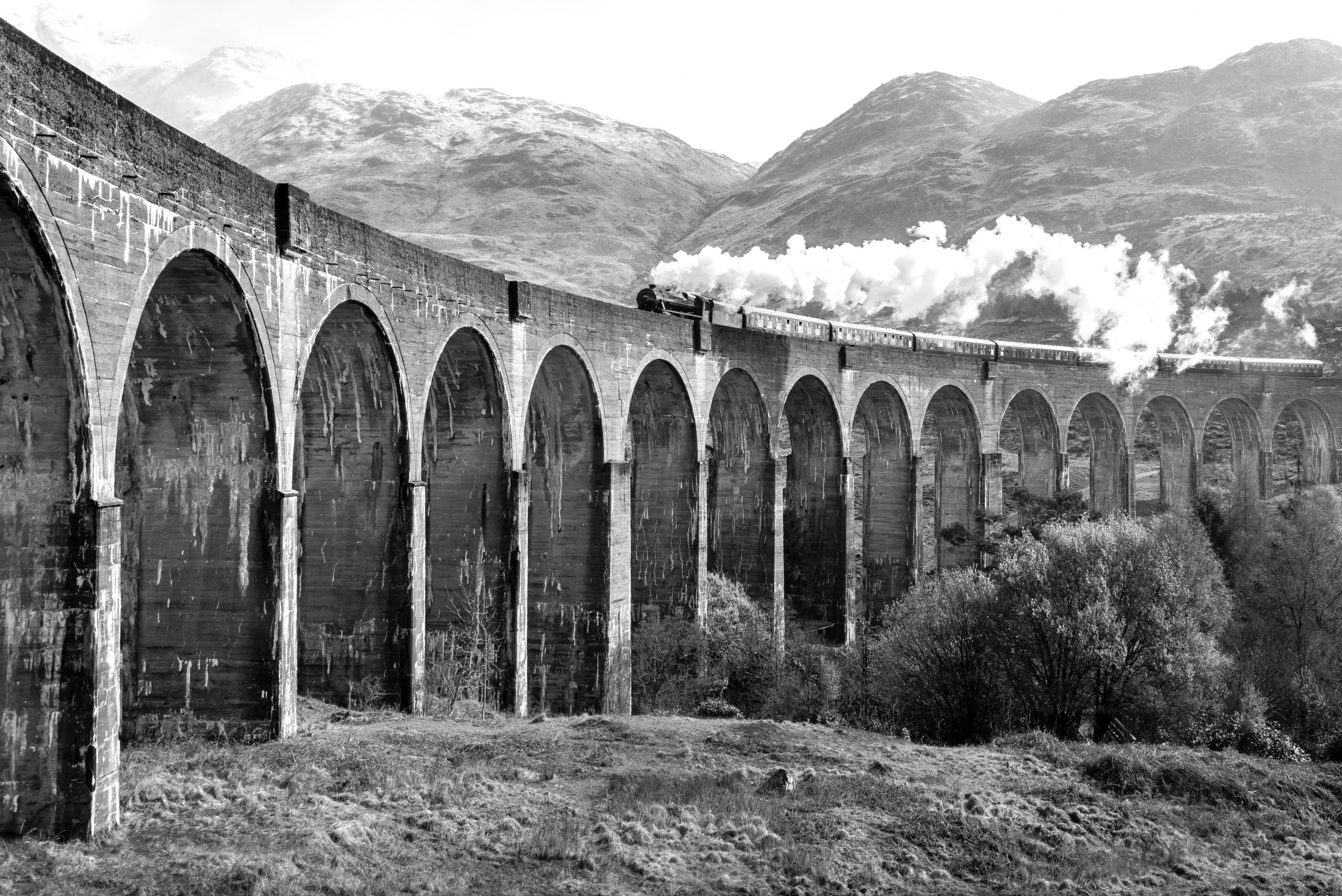Railways were big businesses long before the creation of the Big Four after World War I (London, Midland & Scottish, London & North Eastern, Great Western and Southern). Compared with firms in other industries the railway companies were from the start giants in terms of capital employed and numbers of employees. In 1825 there were only eight firms in Britain with a capital of more than £1million – four canals, two docks and two insurance companies. The first main line railway, the Liverpool & Manchester (LMR) opened in 1830 had a capital of some £600,000. By 1840 16 railway companies had more than £1 million authorised capital and the London & Birmingham (LBR) had £5 million. By 1850 the recently amalgamated London & North Western (LNWR) and its constituents had raised £25 million and the industry as a whole over £200 million so dwarfing the fixed investment in cotton, iron and engineering. Like canals and docks railways were authorised by Act of Parliament while it was difficult to form joint stock companies before the legislation of the late 1850s and 1860s, but even so in 1870 the seven largest companies in Great Britain were all railways and the industry as a whole was employing 275,000 or 3.3 per cent of the country’s entire male labour force.

The railways not only owned the track and stations but also provided locomotives and rolling stock, both of which they soon started manufacturing, as well as undertaking ancillary activities such as docks and hotels. Moreover the industry was highly concentrated in a relatively small number of firms. As early as 1850 despite the very large number of companies, the fifteen largest accounted for 75 % of gross traffic revenue and 61% of paid-up capital in the industry. As the capital of the Stockton & Darlington Railway (opened 1825) was drawn largely from local sources or from the close-knit network of Quakers, so its management was closer to the personalised or partnership form of firm widely found in industry at the time. Later railway companies developed a form which soon saw a divorce between ownership and control. The railways had large volumes of plant, both mobile and fixed, and a huge workforce over an extensive area, but requiring high levels of control to secure efficiency and safety. This scale of business made new demands on business.
The boards themselves set up committees of their members to oversee particular departments such as traffic or locomotive. Railway directors were unpopular figures particularly at the time of the Railway Mania and the subsequent sharp drop in dividends, but in the principal companies they were generally drawn from the higher reaches of mercantile society, industrialists and leading county landowners. But this did not resolve the problem of management. On the formation of the LNWR George Carr Glyn, the chairman and a City banker with extensive experience in insurance and docks, emphasised the success of the constituent companies and the difficulties with which they had to struggle in carrying out what in the first instance had been nothing but an experiment on the largest scale. Glyn when a member of the LBR board had urged that each department should be directed by an officer responsible to the board and the details of management should be left to him. The board however would need a confidential superior officer to generally superintend the working of the system. This in essence was the genesis of the general manager, and approximated to the position occupied by Mark Huish in the LNWR after 1846. Structurally eventually the companies were generally of the centralised, departmental or functional type with departments headed by specialist managers, often with deputies for particular districts, responsible for operations, goods, accounts, legal affairs, etc who were coordinated by the general manager. Here were the beginnings a divorce between ownership and control, unlike in most manufacturing firms of the period. It was a form which was denoted in the twentieth century as managerial capitalism.
However in practice the management system was less clear cut with executive duties and responsibilities initially not well defined or not followed. The primary executive lead was taken by secretaries, traffic managers, or engineers or others. By 1847 there were only two general managers and even by 1870 the position was still not universal. There was no ready formed body of managers. Several were recruited from road carrying firms. Others had substantial business experience, like Henry Booth (LMR), Creed (LBR) and Saunders (GWR) and some were ex-naval or army officers, like Moorsom, (LBR), O`Brien (NER), and Huish.
Satisfactory accounting was slow to develop but the Railway Mania (1845-6) revealed shortcomings in accounting, audit, with fraud and the muddling of revenue and capital. Practices to which many in the euphoria of the Mania had turned a blind eye or with which they had connived were less acceptable in the succeeding depression. Before 1845 only the LBR had produced a general balance sheet. It also devised the double account system. Other improvements followed, some brought about by legislation or the threat of it. The LNWR decided in 1848 to issue more comprehensive accounts, an example which was followed. Standard formats for the accounts of railway companies had to await the Regulation of Railways Act of 1868. Nevertheless the needs of this large new industry provided the basic features of all company reporting and generated principles of accountancy of more general application. Auditing was at first in the hands of shareholders elected for that purpose, but gradually a class of professional auditors emerged who carried out the regular half-yearly auditing of railway accounts. William Welch Deloitte,and Edwin Waterhouse first made their mark in railways, Deloitte was the first independent auditor of a public company, the GWR, and later unravelled the consequences of the Redpath frauds on the Great Northern. Waterhouse was public accountant to the LNWR and worked with several other companies.
Railway saw the growth of other professions. Their engineers played a major part in founding the Institution of Mechanical Engineers in 1847. George Stephenson was the first president. Surveying was another profession which developed as a result of the railways: 15 of the 20 founder members of the Institute of Surveyors in 1868 were railway surveyors.
The London Stock Exchange had been founded in 1802, but railway shares vastly increased the scale of its business and brought about the foundation of provincial stock exchanges in Liverpool and Manchester in 1836 and other cities quickly followed. `Home Rails’ became the favourite and safe investment for many as railways became an accepted part of society.








